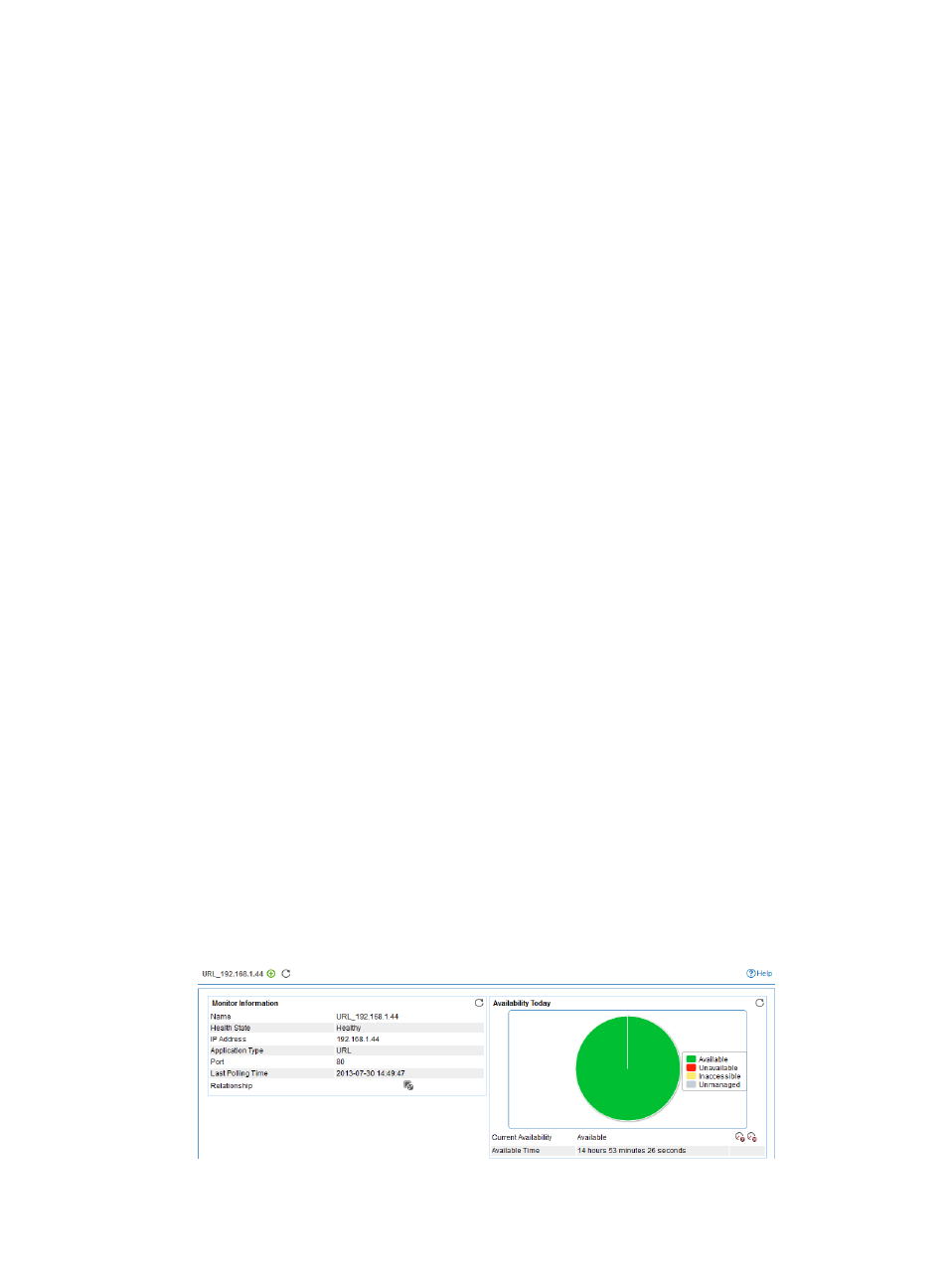Viewing the url application monitor report – H3C Technologies H3C Intelligent Management Center User Manual
Page 567

553
{
Keyword—Enter the keyword that appears on the Web page. APM counts the number of
keywords in the page file after the Web page is displayed.
{
Contact—Modify the contact information, such as name, email address, and telephone
number.
{
Related Applications—Modify the application that URL depends on. Enter the complete or part
of the application monitor name in the Search field at the top of the window, and click Search.
Select the application that URL depends on, and then click OK.
Operating system applications, such as Windows, AIX, SCO UNIX, FreeBSD, OpenBSD,
HP-UX, Solaris, Mac OS, and Linux, cannot be selected. Operators can view all dependencies
of the application in the dependency topology. APM automatically adds the dependencies
between URL and operating system applications by IP address and displays their
dependencies in the application topology.
To remove the relationship between URL and the specified application, select the application
in the Related Applications field, and then click Delete.
{
Detect Application—Select this parameter if you want to enable application detection.
Application detection enables APM to verify connection to the application by using the previous
parameter settings, and to determine whether to modify the application monitor based on the
verification result. APM modifies the application monitor only when it can connect to the
application. If you do not select this parameter, APM modifies the application monitor without
verifying the connection.
5.
Click OK.
Viewing the URL application monitor report
After you add a URL application monitor, APM starts collecting index data of the application to calculate
its availability and health status. Operators can obtain monitor indexes of the URL by viewing the monitor
report.
To access the URL application monitor report:
1.
Click the Resource tab.
2.
Select Application Manager > Application Monitor from the navigation tree.
The application monitor list page displays all application monitors.
3.
Click the name link of a URL application monitor.
The URL monitor report appears, as shown in
. For information about the icons in the
monitor report, see "
." This section describes the fields in each area of the monitor
report.
Figure 456 Part of a URL application monitor report